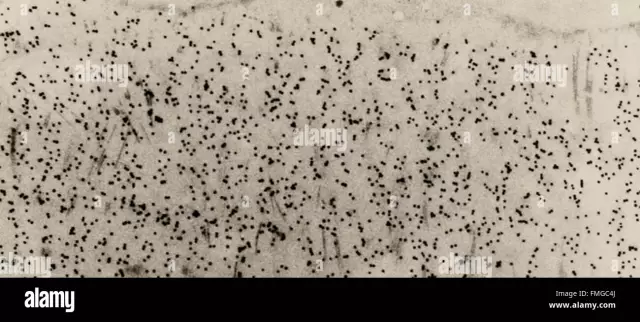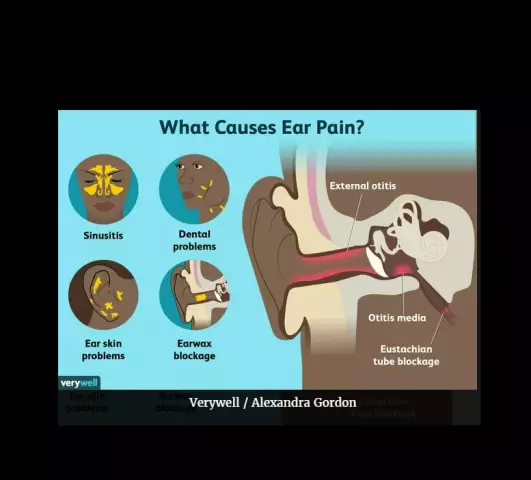- Author Rachel Wainwright [email protected].
- Public 2023-12-15 07:39.
- Last modified 2025-11-02 20:14.
Anus
Anatomy of the anus

The anus (anus) is the anus, which is the lower extremity of the anus, through which fecal matter leaves the body. The anus is surrounded by two layers of muscle - the sphincters - that regulate its opening and closing. The external sphincter of the anus is formed by striated muscles, its vigorous activity is capable of being controlled by consciousness. The internal sphincter is a kind of thickening of the smooth muscles of the rectum, and is not controlled by consciousness.
The anus ends with the anal edge, which is, in fact, a sharp transition of the mucous membrane of the anal canal into the skin of the perineum. In this case, the skin located just outside the anus has a darker shade.
Most of the time, the muscles of the anus are in a state of contraction, serving as a kind of barrier to the involuntary discharge of flatulence and feces. The nasal tone of the anus in a healthy person is 80-100 mm Hg, which corresponds to the pressure inside the inferior rectal artery that supplies blood to the external sphincter and the anal canal.
The passage of feces through the rectum signals the relaxation of the internal sphincter - this is how the so-called rectoanal reflex is carried out. The possibility of stopping the process of defecation is realized with the help of a conscious contraction of the striated musculature of the anus.
The length of an adult's anal canal varies from 3-5 centimeters, due to its individual characteristics. The diameter of the anus is also different: it is capable of reaching from 3 to 6 centimeters. In children, the location of the anus is dorsal (located closer to the back), at a distance of 2 cm from the level of the coccyx.
Research methods of the anus
In proctology, the following methods for examining the anus and rectum are distinguished:
- Finger examination;
- Visual inspection;
- Rectoromanoscopy;
- Anorectal manometry;
- Endosonography;
- Defecography.
Diseases of the anus

There are several types of diseases of the anus. These include:
- Itching in the anus. It can be a symptom of cracks, rectal polyps, internal hemorrhoids, helminthic invasion, as well as intestinal dysbiosis.
- Cracks. They are vertical tears of a superficial nature on the mucous membrane of the anus. False urge to defecate and constipation contribute to the appearance of cracks in the anus. With this disease, symptoms such as pain in the anus are observed, which intensifies during the passage of feces through the rectum, a burning sensation. In some cases, the discharge of blood from the anus can also indicate the presence of cracks or hemorrhoids in the rectal area.
- Perianal hematomas, which are dark red formations located near the anus. The cause of perianal hematoma is the rupture of the rectal vein during the act of defecation. Treatment of perianal hematomas is carried out both with the usual puncture with a needle and with the help of a mini-operation under local anesthesia.
- Hemorrhoids. It is accompanied by pathological expansion of hemorrhoidal veins, coagulation and thickening of venous blood in the rectum, which leads to the formation of hemorrhoids. At rest, they decrease, with straining, they increase and swell, while the pain in the anus is exacerbated.
- Paraproctitis. This form of anus disease is inflammation of the fatty tissue surrounding the rectum. The main role in the occurrence of paraproctitis is played by infection with streptococci, staphylococci, E. coli. In rare cases, the causes of the disease can be surgical or household injuries of the rectum.
- Tumors. Malignant tumors of the anus occur quite rarely, not exceeding 6% of all cancer cases, nevertheless, each of them requires appropriate treatment. Rectal cancer symptoms that are worth paying attention to: the appearance of specific mucus, blood from the anus mixed with feces, itching in the anus, a feeling of a "foreign body", constipation, a change in the shape of feces to ribbon-like.
Prevention of diseases of the anus
In order to prevent the manifestation of cracks, hemorrhoids and other diseases of the anus and rectum, it is recommended:
- Normalize nutrition by enriching your diet with fiber-rich foods (fruits, vegetables, cereals). In this case, you should not abuse spicy, spicy foods and alcohol;
- Monitor regular bowel movements;
- Avoid overloading during bowel movements. It is forbidden to stay on the toilet seat for a long time (for this it is enough to give up the habit of reading books in the toilet), as well as excessive straining;
- Monitor the hygiene of the anus, if possible, implementing a wet toilet after each act of defecation;
- Normalize physical activity. This recommendation especially applies to people employed in "sedentary" work. Practice 10-15 minute breaks during which it is beneficial to engage in physical activity.
Found a mistake in the text? Select it and press Ctrl + Enter.






